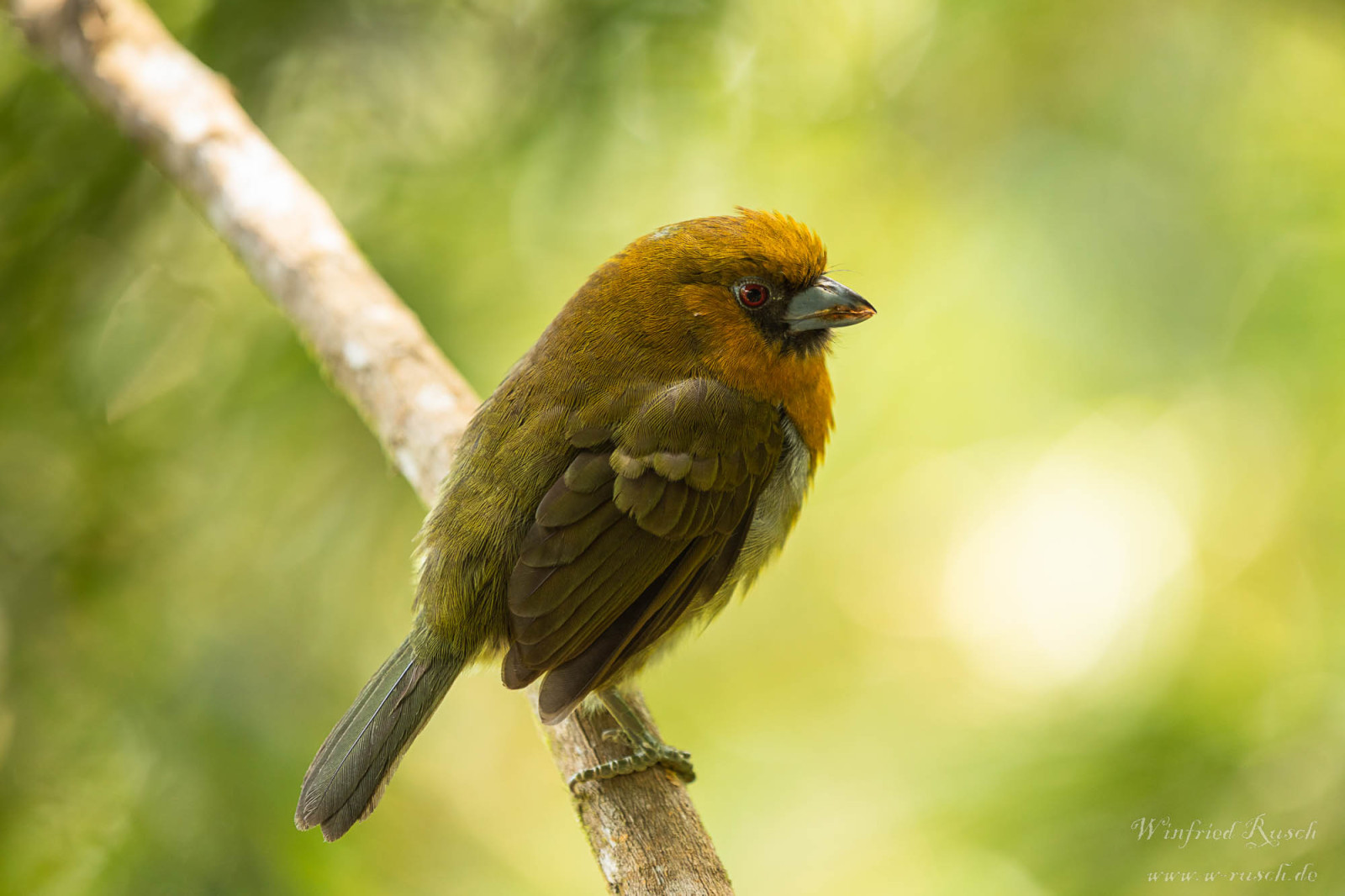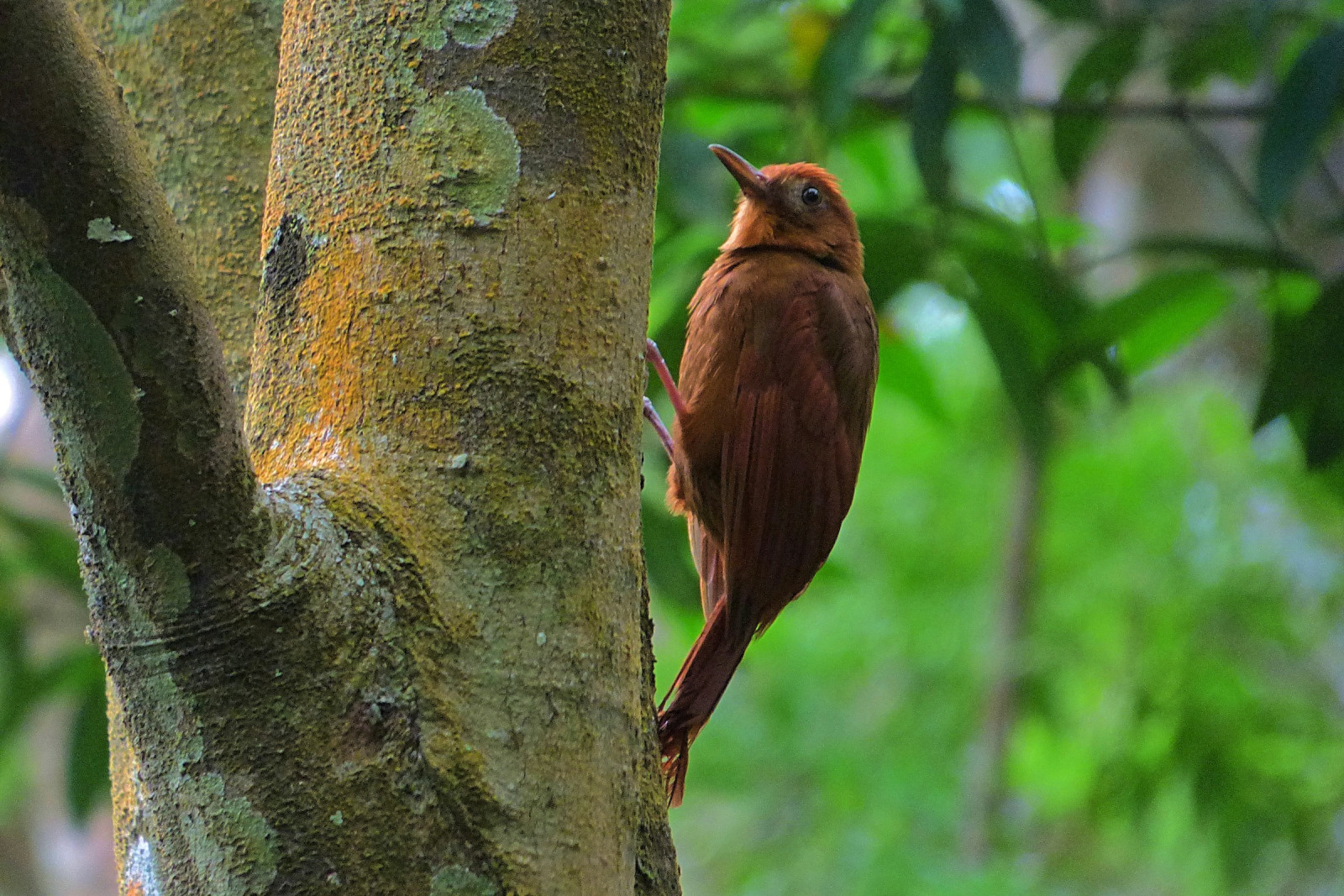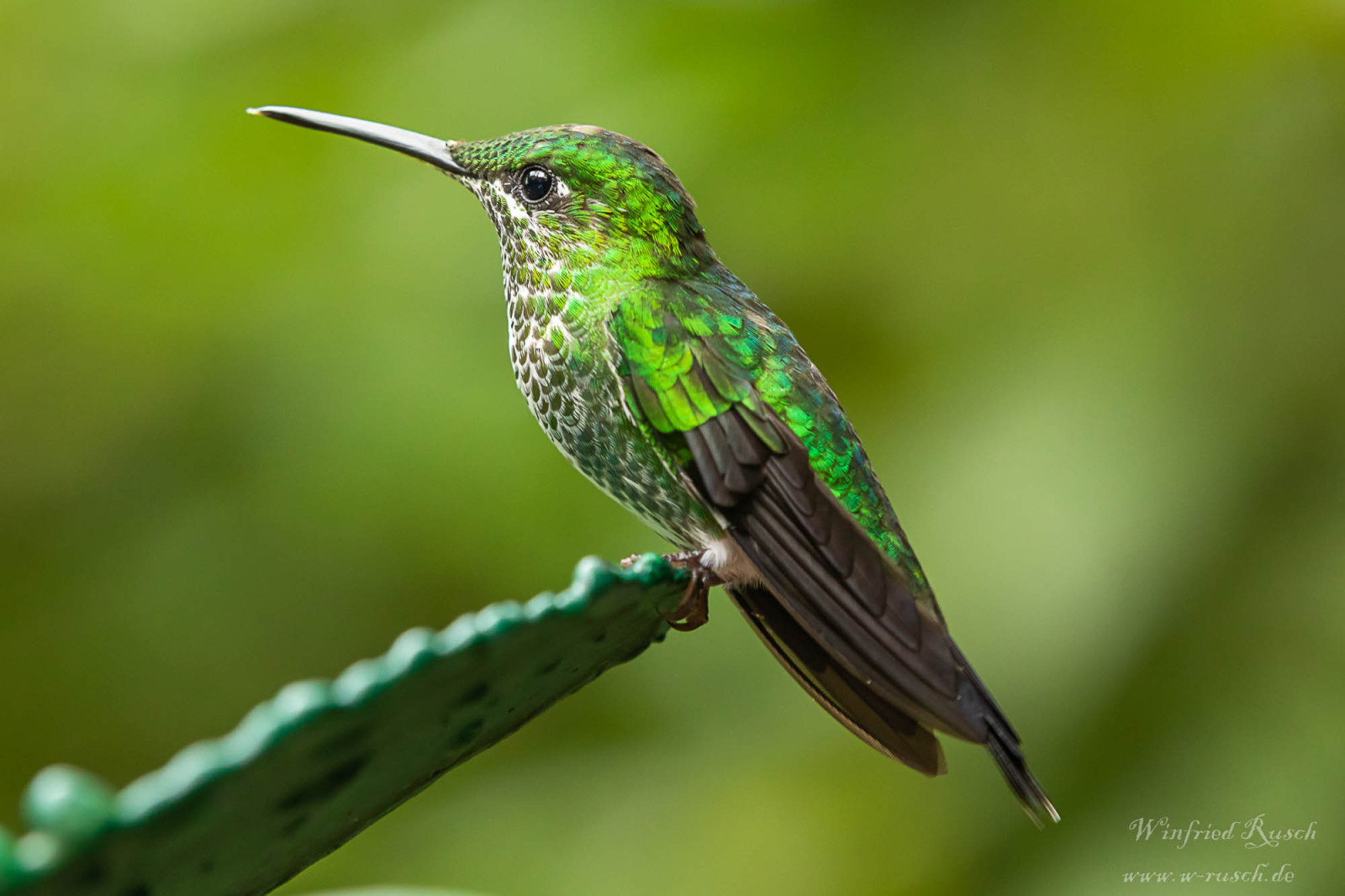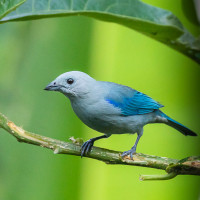Beschreibung
Volcán Poás is 2708 meters high and has two crater lakes. The better-known northern and active crater has a diameter of over 1500 meters, is around 300 meters deep and contains the Laguna Caliente, which is 365 meters in diameter. It is one of the most acidic crater lakes in the world. Its caustic water is an intense turquoise blue. The other crater lake is called Botos. It is 14 meters deep and has a diameter of 400 meters. Both crater lakes are filled with rainwater. The crater can be visited in small, registered groups. As a good road leads almost to the edge of the crater, Volcán Poás has become one of Costa Rica's main tourist attractions.
Poas also houses forests full of birds. The birding in Poas Volcano National Park is good. The upper part of the road leading to the parking has very good forest and is a good place for birding. The paths inside the national park are more busy with visitors, but also good for many birds. Many birds related to the cloud forest can be observed: hummingbirds, toucans, sooty robins, black guans and tanagers are frequently spotted. The Resplendent Quetzal can also sometimes be observed (look for them in fruiting trees) as can mixed flocks with birds like Spot-crowned Woodcreeper, Flame-throated Warbler, Buffy Tuftedcheek, Ruddy Treerunner, Red-faced Spinetail, Yellow-winged Vireo and Sooty-capped Chlorospingus. Mammals are not abundant, although coyotes, weasels, rabbits, smelly skunks and among the most common are the Poas Squirrel and the nine-banded armadillo.
Details
Zugang
Volcán Poás is located just 50 kilometers from San Jose in the Parque Nacional Volcán Poás. Open 7 days a week from 8 AM to 4 PM (last entry at 2 PM). You do not need a 4×4 for Poas Volcano National Park. However, you will need to drive very slowly because the road up the valley is windy, curvy and narrow. Click on the P in the map for directions or coordinates. There is a large parking lot at the national park. This paid parking lot does have surveillance and there is a guard at all times.
The Poas Volcano National Park entrance fee is $ 15 (2024). Every visitor has to purchase entrance tickets beforehand in order to visit the park as they are only allowing a certain number of people in the park a day. They do not sell tickets at the door. Go to the SINAC website (see the link below), create an account, register and purchase your tickets there.
Terrain und Habitat
Berg , WaldBedingungen
GebirgigRundweg
JaIst ein Spektiv nützlich?
NeinGute Beobachtungszeit
GanzjährigBeste Beobachtungszeit
Herbst , FrühjahrRoute
Normaler WegSchwierigkeitsgrad der Tour
DurchschnittlichErreichbarkeit
zu FußBeobachtungshütten oder -türme
NeinZusätzliche Informationen
Once you’re inside the park, follow the signs to the observation point. This trail is 600 meters and takes about 10 minutes on a asphalted road. The Laguna Botos trail is open to give visitors an additional look at an inactive crater lake. The entire trail is 2.8 kilometers or you can walk to the main lake viewpoint which is 800 meters. The 800 meter trail takes about 20 minutes to get there. To go back, you walk the same path way so it’s about 40 minutes total walk. If you have time, you can continue onto the other two paths. The hours are 8 AM to 230 PM (cannot enter after 230 PM).






 wikimedia andy Morffew.jpg)
